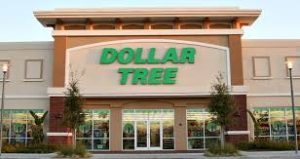Dollar Tree’s $8 Billion Loss: Inside the Failed Family Dollar Merger and What’s Next

Anúncios
The Billion-Dollar Breakup
The decision to sell Family Dollar for $1 billion marks a significant shift for Dollar Tree, closing the chapter on a tumultuous nine-year marriage that initially promised to create a formidable discount retail powerhouse.
The $9 billion acquisition, which at the time was seen as a strategic move to rival chains like Walmart and Dollar General, has instead resulted in a dramatic financial loss.
Anúncios
The sale, pending regulatory approval, will transfer Family Dollar to private equity firms Brigade Capital Management and Macellum Capital Management.

Anúncios
A Disastrous Investment
The acquisition of Family Dollar by Dollar Tree in 2015 came with high expectations.
The goal was to merge the strengths of both companies, leveraging Family Dollar’s urban market presence with Dollar Tree’s stronghold in suburban and rural areas.
However, the stark differences in business models, target markets, and operational styles quickly became apparent.
Family Dollar’s low-income customer base and broader product pricing did not align well with Dollar Tree’s simplistic $1 price point structure.
Poor Performance and Operational Issues
Family Dollar’s struggles were multifaceted. Repeated complaints about disorganized stores and poorly maintained facilities persisted despite multiple renovation efforts.
These operational inefficiencies were further highlighted by a record $41.6 million fine for safety violations linked to a rat-infested warehouse.
Such issues eroded consumer trust and made it challenging for Family Dollar to retain a loyal customer base.
Cannibalization Issues
Another critical factor that aggravated the situation was the overlap of store locations, leading to cannibalization.
Many Family Dollar premises were situated near Dollar Tree stores, and this proximity resulted in the two brands competing against each other for the same customer base rather than expanding their collective reach.
Instead of driving synergistic growth, the proximity of overlapping stores caused internal competition, diluted sales, and eroded profits.
This situation was contrary to the original merger intent of expanding market presence and customer base.
The misalignment, operational struggles, and cannibalization significantly contributed to the failure of the Dollar Tree and Family Dollar merger.
As the sale of Family Dollar proceeds, the challenges faced during this merger serve as crucial learning points for future business ventures in the retail sector.
Family Dollar’s Operational Struggles
Family Dollar’s operational struggles were a pivotal factor in the failure of its merger with Dollar Tree.
Despite efforts to improve, issues like messy stores and poor maintenance persisted.
Family Dollar attempted renovations to boost the store conditions, but many locations remained subpar.
Analysts described the stores as disorganized, with high prices contributing to the negative customer experience.
This was a far cry from Dollar Tree’s expectations upon acquiring Family Dollar.
| Category | Details |
|---|---|
| 💼 Violation | Sale of products from a warehouse infested with rats |
| 💰 Fine | $41.6 million fine by the Justice Department |
| 📍 Location | West Memphis Facility |
| 🐀 Warehouse Condition | Live, dead, and decaying rodents present |
| ⚠️ Product Safety Violation | Violation of product safety standards |
| 📉 Impact | Further damage to brand reputation and strained finances |
Competitive Pressure
Family Dollar faced fierce competition from larger retailers, notably Walmart and Dollar General.
These competitors offered cleaner, better-maintained stores and broader product selections, making it difficult for Family Dollar to stand out.
Moreover, Dollar General’s strong presence in rural areas intensified the pressure.
The steep competition and operational inefficiencies made it hard for Family Dollar to maintain a loyal customer base.
Refocusing on a brighter future for the merged company did not succeed as anticipated.
The challenging operational landscape and persistent competition highlighted that, for Dollar Tree, continuing the combined experiment was no longer viable.
This strategic shift opens new discussions about the long-term prospects for discount retailers amid ongoing economic uncertainties.
Industry-Wide Challenges
Family Dollar’s recent struggles are symptomatic of broader issues facing the dollar store sector.
These low-cost retailers, once a staple for bargain hunters and budget-conscious consumers, are encountering an array of challenges that threaten their sustainability.
Financial Pressure on Customers
Inflation is one of the most significant hurdles.As the prices of essential goods keep increasing, low-income shoppers, who primarily rely on dollar stores, many people are struggling to make ends meet.
Many customers report having to prioritize essentials, with some having to sacrifice even basic necessities.
This financial pressure has led to a slowdown in consumer spending across all income levels, exacerbating the challenges faced by dollar stores.
Intense Competition
The dollar store sector is also feeling the heat from larger chains like Walmart and Dollar General.
These competitors offer similar low-price goods but with the added advantage of more extensive selections and better-maintained stores.
The fierce rivalry has led to shrinking market shares for traditional dollar stores, including Family Dollar and its peers.
Tariffs and Price Increases
External economic policies, such as tariffs on imported goods, are another critical factor adding strain to dollar stores.
The tariffs have increased import costs, forcing retailers to consider changes in product specifications or even removing some items from their shelves altogether.
Dollar Tree, for instance, cited the need to adapt to these new costs, potentially leading to further price hikes.
Shift in Pricing Strategies
Adapting to these challenges, some dollar stores have changed their long-held pricing strategies.
Dollar Tree raised its standard price from $1 to $1.25 in 2021 due to escalating costs, ending its iconic single-price point tradition that had lasted for three decades.
This shift illustrates the broader pressure on the business model of dollar stores, making them less of the low-cost bastions they once were.
Broader Implications
The issues faced by the dollar store sector act as a mirror to the larger economic environment.
Low-income households are the most affected by these changes, emphasizing wider socio-economic disparities.
The dollar store model, built on the premise of offering everything for a dollar, must now adapt to a more complex and competitive marketplace.
Looking ahead, the industry must navigate these challenges while continuing to serve its traditional customer base effectively.
This requires not only strategic pricing adjustments but also a reconsideration of operational efficiencies and customer engagement approaches.
Future Implications and Market Impact 🌍
Tariff Challenges and Pricing Strategies
As Dollar Tree maneuvers through the labyrinth of retail economics, the impact of tariffs on imported goods poses a formidable challenge. ⚔️
With approximately 40% of its sales reliant on imports, Dollar Tree could face increased costs if these tariffs persist.
In response, the company might need to adjust product specifications, alter sizes, or even eliminate certain items if they become cost-prohibitive.
The ripple effect of these tariff challenges could necessitate revisiting its pricing strategy—potentially increasing prices further from the current $1.25.
Dollar Tree’s Pricing Shift 🔄
In 2021, Dollar Tree made a significant move by raising its base prices from the iconic $1 to $1.25, marking the end of its historic single-price model.
The shift was partly a defensive measure against rising operational costs, including those influenced by tariffs.
While this change allowed for a broader range of products and potentially improved margins, it also risks alienating core customers who are accustomed to the dollar tradition.
Broader Dollar Store Business Model Implications 📉
The economic pressure exerted by larger retailers and inflation has created a perfect storm challenging the dollar store sector. 🌧️
With consumers—particularly low-income shoppers—struggling to afford basic necessities, the dollar stores’ proposition of affordable convenience is under scrutiny.
The sustainability of the traditional dollar store model is in question as inflation persists, and shifts in pricing strategies become indispensable.
Dollar Tree and its competitors must adeptly navigate this evolving landscape to maintain relevancy.
Strategic adaptations will be crucial, not only in pricing but also in enhancing operational efficiencies and customer engagement strategies. 👥
As the industry continues to grapple with these challenges, the next phase will require resilience and adaptability without explicitly previewing what’s to come. 💪


![Capital Gains Tax on Real Estate: What Home Sellers Need to Know [Complete Guide] Capital Gains Tax on Real Estate What Home Sellers Need to Know [Complete Guide]](https://snewdigi.com/wp-content/uploads/2024/12/Capital-Gains-Tax-on-Real-Estate-What-Home-Sellers-Need-to-Know-Complete-Guide-300x150.webp)




